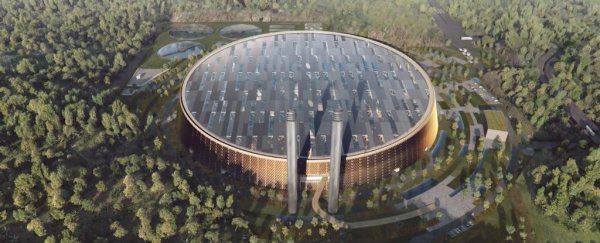The Chinese city of Shenzhen plans to tackle its serious waste problem by burning 5,000 tonnes of it a day in what will become the largest waste-to-energy plant in the world.
The process, which is expected to turn at least a third of the trash into useable electricity, isn't exactly the best thing for the environment on account of all the CO2 it'll release, but it'll at least put a nice, big dent in the landfills and illegal dumps that have been building up in Shenzhen. One of these landfills actually killed dozens of people last year when it unexpectedly collapsed.
Expected to be up and running by 2020, the plant is less about generating electricity and more about finding a solution to the existing trash problem - the energy is just a handy bonus.
According to Adele Peters at Fast Company, the new incinerator is one of 300 waste-to-energy plants that the Chinese government plans on building over the next three years. And while there's been much debate over just how environmentally friendly (or not, as the case may be) burning all that trash is, many countries around the world have been using the process to essentially 'right the wrongs' of the past.
"Waste-to-energy plants are not an energy solution," Chris Hardie from Schmidt Hammer Lassen Architects, the Denmark-based firm that won a competition to design the plant, told Peters, adding that the amount of greenhouse gases emitted from decomposing landfills is around double the CO2 released by incineration.
"They are a way of dealing with waste and using this process to generate electricity as a byproduct of the process. Cities have to move towards more recycling and reducing their waste for sure - and of course developing more sources of renewable energy. That is sort of the point we are making by proposing this be the first waste-to-energy plant that has a renewable component to it," he said.
What Hardie is referring to there is the fact that the roof of the massive plant - which will stretch about 1.6 km long (1 mile) - will be topped with around 44,000 square metres of solar panels.
The idea is that the plant won't just be about getting rid of trash, it will be providing clean and sustainable electricity to the surrounding city, and inviting members of the public to visit the facility and see it in action.
"The waste challenge is all about education - and experiencing the scale of the challenge is part of that education process," says Hardie. "Think of it like smoking in the 1950s and 1960s - everyone smoked. It was only until a civilisation became educated on how much it was polluting our own bodies did we dramatically stop. Waste is similar. If you don't realise the damage it is doing, why stop creating waste?"
Ultimately, while burning trash is pretty much a necessary evil at this point, because there's no point pretending it doesn't exist, what China should also be focussing on is how to prevent similar build-ups in the future.
Fast Company points out that by 2020 - the year the plant is expected to be operational - San Francisco plans on being a zero-waste city through some serious composting and recycling efforts. If burning waste is our reality today, let's hope no waste at all will be our future.
